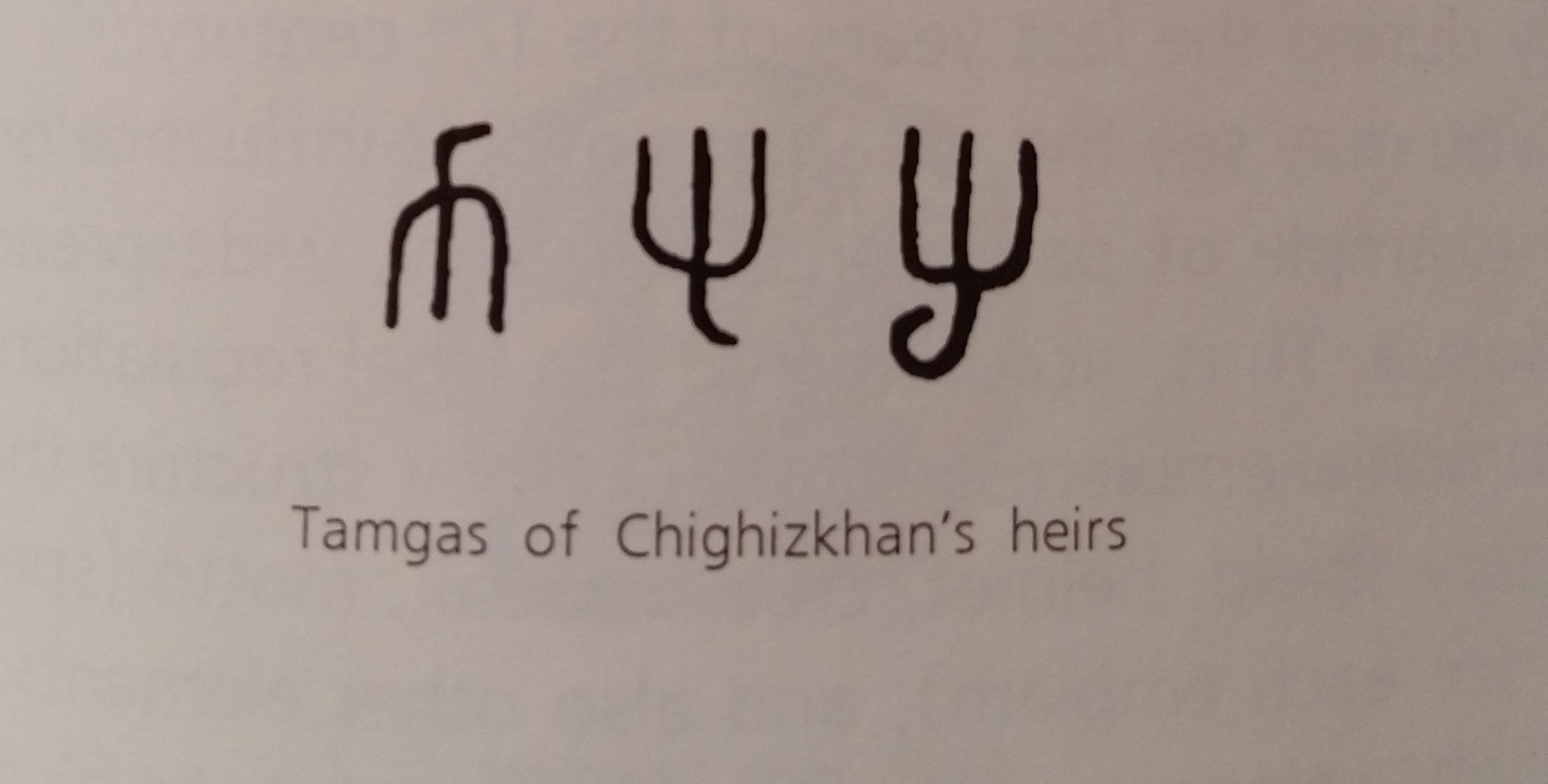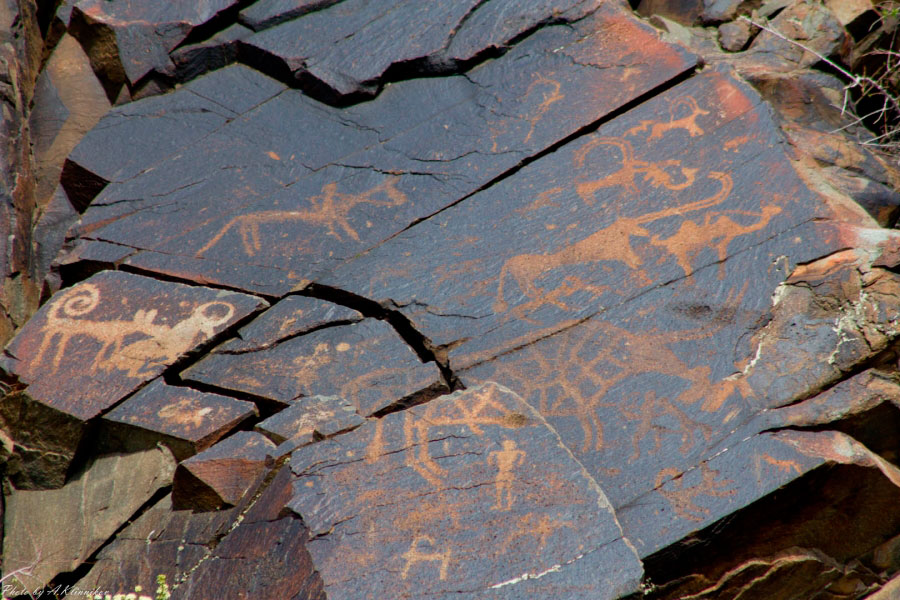

The expression «tamga tax» appears in this deed, which means stamp tax. The duty payment from trade caravans called «the tamga tax» existed in Central Asia since the 13th century («History of four uluses» by Mirzo Ulugbek). By the way, the word «customs house» («tamozhnya» in Russian), till now used in Russian, occurs as a result of simplifying the word combination «tangba bazhy» (stamp tax). In the widely known annals of the famous scientist of the 13-14th centuries Rashidaddin there is information, how the governor Oguzkhan, reigning on huge territory from Iran up to Altai, has distributed his possessions, vassal states (uluses) to his sons. Thus he entrusted them the khan’s tamga. His third son, owner of steppe territories, for example, has got the tamga with the representation of the eagle. Kazakhs also used patrimonial tamgas.

Tamga of this or that tribe, and also tamgas of their leaders were important elements of military banners, alongside with their color. The Kazakh military banners belong basically to the type of so-called «stamp» flags. Tamgas were used as the emblems, seals instead of the signatures and so on. Their pictures are frequently met in composition on rock carvings and other ancient monuments of literature and art, on different subjects of material culture, seals and coins found at archeological excavation on the territory of the Republic.
On the left - the Tamgas of Kazakh tribes and clans
Outstanding Kazakh scientist archeologist, academician A.Margulan wrote that among monuments of Begazy Dandybayev culture (bronze century) the tamga of the kin Baganaly was found. In 1882-1892 the well-known Russian orientalist N.F.Kostanov has collected about three thousand samples of tamgas and seals of the Turkic nations. The first coins, known to us, with the image of tamgas of the Kazakh tribes and kins, belong to the time of Great Turkic Khanate, to the 6-7th centuries. The cities of Otrar and Taraz on the due time were the large political, economic centers in Asia and had their own mints, in which they minted gold, silver, copper and tin coins with the images of tamgas in the form of the bow, square, triangle, and lions in different poses.
There are inscriptions on some coins. On the state and personal seals alongside with tamgas there were also various inscriptions, mainly the names of their owners.
It is the historical fact that the Kazakh leaders have sealed their political agreement about natural unification by carving patrimonial and personal tamgas on the stone plate of Ulytau Mountains. This place named «Tanbaly tas» is located in 10 km from the Kyzylzhar station on the territory of present Karaghandy district. It has important symbolical meaning in the historical memory of the people and is deeply esteemed by the Kazakhs all over the world.

In 1992, during the First World Kazakh Kuryltai, which gathered the Kazakhs from different countries, the compatriots began long-awaited and very desired meeting with their Great native land from visiting Ulytau.
The President of the Republic of Kazakhstan N.A.Nazarbayev supported the initiative on perpetuating the major political event in the history of the country. It once again convinces us that tamga played an appreciable role in the political history of Kazakhstan. As it is known, it also served as the sign of the property belonging to the tribe, kin, family and person. It shows that the tamga played its role in the development of social relations, and in regulation of the economic relations.
